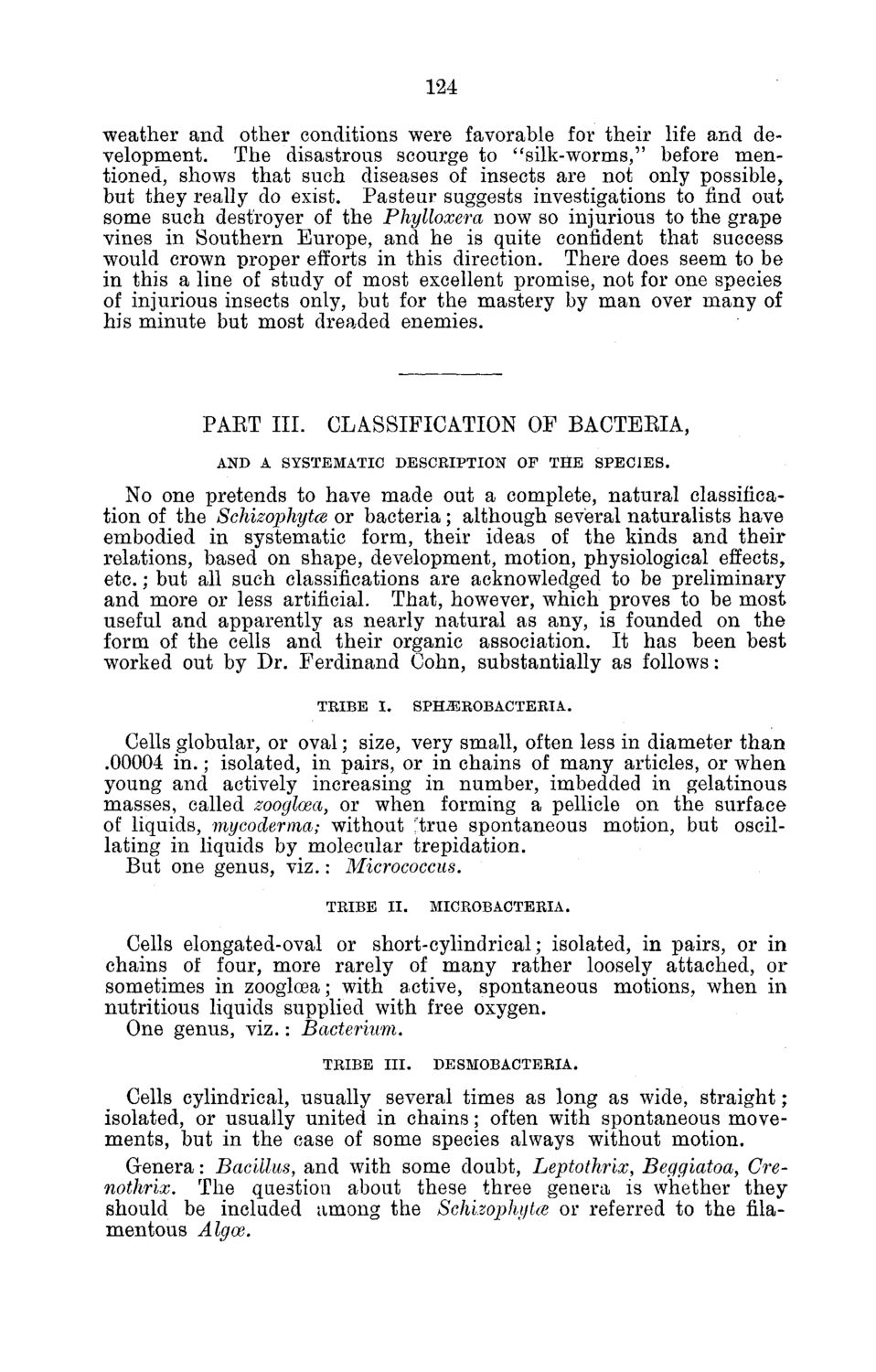| |
| |
Caption: Board of Trustees Minutes - 1882
This is a reduced-resolution page image for fast online browsing.

EXTRACTED TEXT FROM PAGE:
124 weather and other conditions were favorable for their life and development. The disastrous scourge to "silk-worms," before mentioned, shows that such diseases of insects are not only possible, but they really do exist. Pasteur suggests investigations to find out some such destroyer of the Phylloxera now so injurious to the grape vines in Southern Europe, and he is quite confident that success would crown proper efforts in this direction. There does seem to be in this a line of study of most excellent promise, not for one species of injurious insects only, but for the mastery by man over many of his minute but most dreaded enemies. PAKT III. CLASSIFICATION OP BACTEEIA, SPECIES. AND A SYSTEMATIC DESCRIPTION OF THE No one pretends to have made out a complete, natural classification of the Schizophytce or bacteria; although several naturalists have embodied in systematic form, their ideas of the kinds and their relations, based on shape, development, motion, physiological effects, etc.; but all such classifications are acknowledged to be preliminary and more or less artificial. That, however, which proves to be most useful and apparently as nearly natural as any, is founded on the form of the cells and their organic association. It has been best worked out by Dr. Ferdinand Cohn, substantially as follows: TRIBE I . SPH^ROBACTERIA. Cells globular, or oval; size, very small, often less in diameter than .00004 in.; isolated, in pairs, or in chains of many articles, or when young and actively increasing in number, imbedded in gelatinous masses, called zoogloea, or when forming a pellicle on the surface of liquids, mycoderma; without 'true spontaneous motion, but oscillating in liquids by molecular trepidation. But one genus, viz.: Micrococcus. TRIBE I I . MICROBACTERIA. Cells elongated-oval or short-cylindrical; isolated, in pairs, or in chains of four, more rarely of many rather loosely attached, or sometimes in zoogloea; with active, spontaneous motions, when in nutritious liquids supplied with free oxygen. One genus, viz.: Bacterium. TRIBE I I I . DESMOBACTERIA. Cells cylindrical, usually several times as long as wide, straight; isolated, or usually united in chains; often with spontaneous movements, but in the case of some species always without motion. Genera: Bacillus, and with some doubt, Leptothrix, Beggiatoa, Crenothrix. The question about these three genera is whether they should be included among the Schizophytce or referred to the filamentous Algoe.
| |